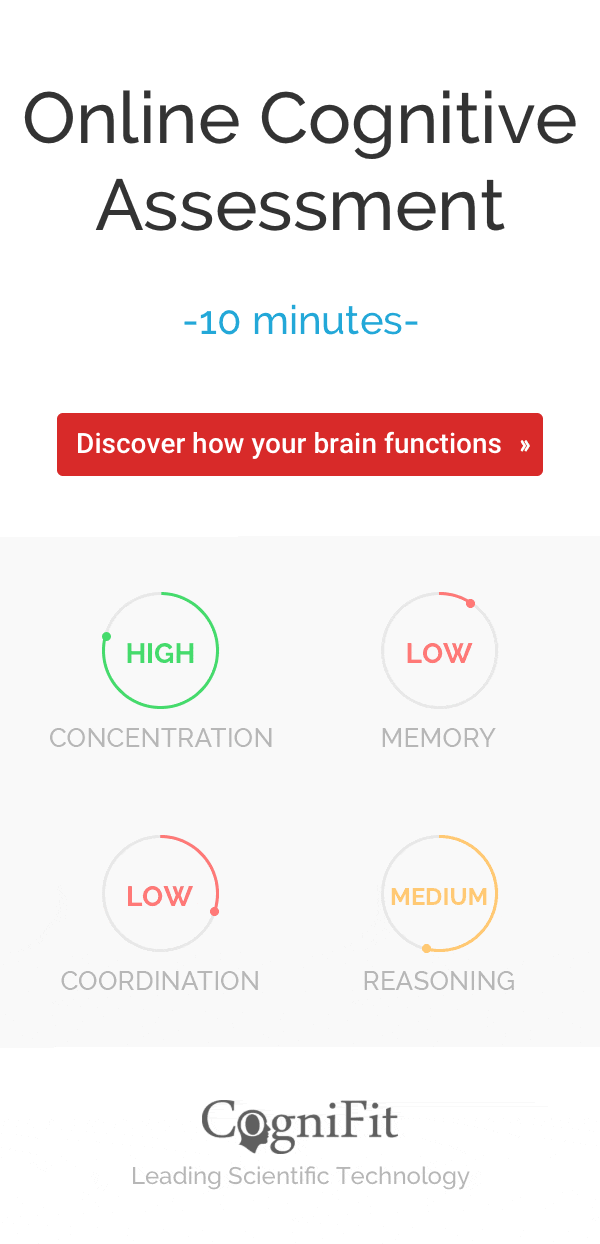
Resiliency: Overcoming negative experiences
Throughout our lives, most of us will encounter some kind of trauma – an incident that inflicts physical, emotional, spiritual, or psychological harm. While we all endure misfortune, how we respond to trauma is what’s important.
Resiliency provides the ability to cope mentally and emotionally. The mental processes and behaviors applied by resilient individuals are a huge aspect of overcoming negative experiences.
Let’s look at what resiliency is, how we can nurture it, and how educators can promote it in their classrooms.
What is Resiliency?
Resiliency is the thoughts, behaviors, and actions that promote the ability to cope during times of stress. This includes adversities such as trauma, threats, death, physical disability, financial difficulties, or family and relationship problems.
Someone possessing resiliency copes both mentally and emotionally with their stressors or trauma – quickly returning to baseline. The term resiliency is the psychological equivalent of “getting up and dusting yourself off” after getting knocked down by life’s tragedies.
People with resiliency still experience significant emotional pain and distress. However, they apply key behaviors that allow them to experience their sadness, accept the events occurring, and then continue moving forward. They manage to avoid psychological consequences under extreme stress.
Why is Resiliency Important?
Resiliency is important because it makes overwhelming experiences easier to handle without negative repercussions. For example, it protects against the development of mental health issues like increased depression and anxiety. Those with high levels of resiliency have stable relationships, are less likely to engage in substance abuse behaviors, and have improved academic and job achievement.
Risk Factors For Poor Psychological Resiliency
Poor psychological resiliency is a struggle for many. Studies in clinical neuroscience (Levine, 2003) proved there are certain risk factors for low levels of resiliency:
- Poverty
- Childhood abuse
- Lack of nurturing adults during childhood
- Family conflict or divorce
- Parenting style—excessively severe or inconsistent punishment
- Substance abuse
- Academic failure or inadequate education
- Community disorganization
- Exposure to violence
- Delinquent peer culture or community environment
Protective Factors For Resiliency
Someone encountering adversity can potentially respond in three ways. They may exhibit sudden, extreme anger, go numb (failing to express their overwhelming emotions) or they become reasonably upset. The former two reactions do not respond to the situation. Instead, they do not cope with the negative experience, do not accept their feelings, and blame others. These individuals do either not have protective factors or do not have the skills to utilize them.
Contrarily, those with resiliency tend to respond to adversity with the latter.
They accept unsettling emotions (i.e. fear, anxiety, hopelessness, etc.) and overcome them through coping methods. Protective factors in the environment like family support, competent schools, and interactive communities strengthen their resiliency. The resilient response is best for an individual’s well-being.
Neurobiology of Resiliency
Resilience is directly linked to the nervous system. Numerous brain structures stimulate resilience.
Firstly, the hypothalamic-pituitary-adrenal axis initiates the hormonal and physiological response to stress. Recent research suggests that dehydroepiandrosterone (DHEA), a steroid hormone, counteracts the harmful effects of cortisol released in times of stress. Studies (Russo et al., 2012) on PTSD reflect that higher levels of DHEA are related to symptom improvement.
The hippocampus and medial prefrontal cortex control these processes.
What Promotes Resiliency?

With the knowledge of the risk factors against resiliency comes the determinants that promote it! Multiple traits, characteristics, and behaviors are associated with resiliency. These factors occur over a range of dimensions from the self to the culture in which an individual ascribes to.
Self
- Self-esteem
- Self-awareness
- Self-efficacy
- Independence
- Positive outlook
- Having goals
- Abstaining from substances (i.e. drugs, alcohol, etc.)
- Ability to solve problems
- Responsibility
Community
- Safety and security
- Social equity
- Quality education
- Access to learning resources
- Work and career opportunities
- No exposure to violence
- Housing
- Healthy environment with sustainable resources
Relationships
- Age-appropriate emotional expression
- Peer acceptance
- Family monitoring
- Positive role models
- Getting along with others
- Social support at school, work, home, or community
Culture
- Cultural identification
- Sense of duty
- Affiliation with a religious organization
- Tolerant of contrasting beliefs
- Preserving values
- Knowledge of history and cultural traditions
How To Build Resiliency
We are not born with a fixed, innate capacity for resiliency. Creating and refining the skills takes practice. Anyone can build upon the necessary thoughts, behaviors, and actions that begin to construct resiliency.
Cognitive Behavioral Therapy
Cognitive-behavioral therapy is a form of psychotherapy that focuses on recognizing unproductive thoughts, beliefs, attitudes, and behaviors and challenging those cognitive distortions to regulate emotions and cope with current problems.
In cognitive-behavioral therapy, the therapist works with the client to change thought patterns. While the therapy treats depression, anxiety, and other mental health conditions, it is useful in building psychological resilience.
A way cognitive behavioral therapy is particularly conducive to building resiliency is that clients are taught coping skills such as meditation, socialization, and behavioral experiments, and they can practice these techniques in a safe setting. Studies advocate for the “four steps to resilience” protocol that entails the steps: (1) search for strengths, (2) construct a personal model of resilience, (3) apply the personal model of resilience to life’s difficulties, and (4) practice resilience (Padesky & Mooney, 2012).
Develop Goals
Developing attainable goals cultivates resiliency. It is a sign that the person is willing and equipped to move forward regardless of the stress they are currently experiencing. Goals must be realistic and reachable to incite feelings of accomplishment.
Enhance Executive Function Skills
Executive functions are cognitive skills that control behavior and facilitate the attainment of goals. They are important to manage all of life’s tasks. Executive function skills include:
- Working memory – Being able to retain information and put it to use when needed
- Cognitive flexibility – Thinking about something from multiple angles
- Inhibitory control – The voluntary inhibition of impulses which is the ability to have self-control over thoughts and actions
- Attention – Selectively focusing on a stimulus while ignoring irrelevant stimuli
- Organization – Manipulating memory to plan and prioritize information
Developed executive function skills promote healthy relationships, academic success, and appropriate behavior. Additionally, they are responsible for regulating emotions, self-monitoring, and understanding points of view. The effects of executive function skills combined lead to resiliency.
Healthy Lifestyle

Preserving a healthy mind is imperative to managing stress. Lifestyle adjustments are often beneficial.
Consume a diet of proper nutrition; the body needs healthy fats, antioxidants, vitamins, and minerals to combat mental and physical illness. In combination with dietary changes, exercise releases endorphins that boost mood. Getting enough sleep at night provides a period of rest and healing for the brain. The aim is to keep the brain healthy to boost the thinking skills and mental energy necessary for resilience.
Maintain Positive Relationships
Strong interpersonal relationships with family and friends lend support during a crisis.
Unconditional love and support are normally a product of positive relationships. Having relationships around builds resiliency because the individual knows they have others for support in a crisis. This also generates a happier mindset.
Acceptance
Readiness to accept any negative transpiring events is a central aspect of resiliency, but that is solely for unchangeable stressors. While accepting the challenges that cannot change is a characteristic of resiliency, do not view stress as hopelessly undefeatable. Even in instances where an individual is not in control, they can choose how they respond to a given situation.
Self-Discovery
As we learn about ourselves, we are building the foundation for resiliency. Tragedy and trauma cause individuals to analyze who they are. Amid self-discovery, many establish self-esteem, self-acceptance, and self-efficacy. They locate a larger purpose from their crises that brings them comfort in times of stress—anything from charity work to participating in meaningful activities.
Promoting Resiliency in Children

Childhood is a critical stage for developing resiliency. Parents, teachers, and other authority figures play a key role in promoting its development.
Children who display resiliency continue to mature mentally and emotionally at normal rates despite adversity. However, without resiliency, children face the risk of sleep disturbances, poor appetite, difficulty concentrating at school, fluctuating mood, headaches or stomachs, and losing interest in activities they previously enjoyed.
The following can promote resilient traits and behaviors.
Maintaining A Positive Family Environment
For optimal development, children require a family who is nurturing, sensitive, and present. Parents especially promote resilience through their parenting styles. Resilient children have parents who actively participate in their lives.
In their awareness, they ensure the child has their share of independence to grow into their own person. Even when hardships like divorce occur, families must openly communicate their emotions to set the basis for productively expressing emotions and reframing negative experiences. Maintaining a trusting relationship with at least one adult drastically reduces the possibility of poor resiliency.
Supportive Community
Our community contains the sectors of businesses, faith-based organizations, first responders, the media, health care professionals, school personnel, and town leaders.
A community that promotes resilience is prepared to respond in case of emergencies. Its leaders form connections with the community’s residents, creating a sense of security integral to a child’s resilience. The community also contributes activities (i.e. sports, church groups, etc.) that teach children responsibility, belonging, and other skills great for building resiliency.
Classroom Environment
Students, which comprise the majority of the population of young people in developed countries, spend most of their time at school. Thus, teachers have the responsibility of promoting resilience.
The main focus should be on fostering positive peer relationships, as well as the student-teacher relationship. Implementing a curriculum that includes peer interactions allows students to practice the socialization needed to overcome adversity.
Research shows students appreciate a teacher that demonstrates “authority and influence over the class” and that they “trust and have positive regard for the student” (van Uden, 2014). A teacher is meant to provide structure to the classroom to allow students to learn, which undoubtedly enhances resilience by introducing them to problem-solving skills.
Prevent Bullying
Bullying is an intentional act of aggressive physical or verbal behavior directed towards an individual in a lower position of power. Behaviors such as making threats, teasing, spreading rumors, isolating another, or hurting their body or possessions are considered bullying. Being bullied is a type of emotional trauma. Lessening that by preventing the occurrence of bullying promotes resilience.
Regulating one’s emotions is paramount to resilience, yet bullying stems from the inability to express emotions productively. The process of bullying prevention begins in the home and at school. Families and teachers must teach children how to express their emotions in a non-aggressive manner. This reduces the chance of them taking their frustration out on their peers.
References
Levine S. (2003). Psychological and social aspects of resilience: a synthesis of risks and resources. Dialogues in clinical neuroscience, 5(3), 273–280.
Padesky, C.A., & Mooney, K.A. (2012). Strengths-Based Cognitive Behavioural Therapy: A Four‐Step Model to Build Resilience. Clinical Psychology & Psychotherapy, 19(4). doi: https://doi.org/10.1002/cpp.1795
Russo, S. J., Murrough, J. W., Han, M. H., Charney, D. S., & Nestler, E. J. (2012). Neurobiology of resilience. Nature neuroscience, 15(11), 1475–1484. doi:10.1038/nn.3234
Van Uden, J.M., Ritzen, H., & Pieters, J.M. (2014). Engaging students: The role of teacher beliefs and interpersonal teacher behavior in fostering student engagement in vocational education. Teaching and Teacher Education, 37, 21-32.












